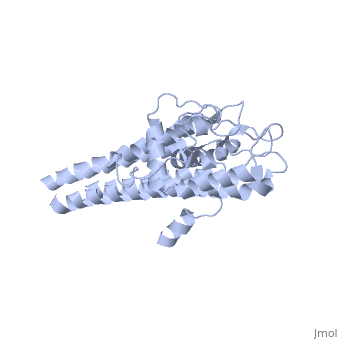User:Sara Christine Norkelun/Sandbox 1
From Proteopedia
VlsE
Vmp-like sequence, Expressed
|
Introduction
Lyme disease is a systemic bacterial infection that can lead to chronic dehabilitating effects if left untreated. The symptoms are varied and affect multiple systems, sometimes making diagnosis difficult. Some initial symptoms are not unique to Lyme disease, and include fever, headache, lethargy, and soreness. The main identifying symptom is a characteristic bullseye rash that develops locally near the site of infection. If the infection is allowed to progress, more serious symptoms develop such as arthritis, swollen joints, and even neurological symptoms such as depression and psychosis.
The disease is caused by the bacterium, Borellia burgdorferi, the spirochete responsible for most Lyme disease in most of the Eastern region of North America. Borellia b. has a complex life cycle, transferring from different hosts. However, the main vector of disease transmission to humans is the deer tick, Ixodes scapularis, particularly the young nymph stage.
The main challenge to treatment of the disease is the bacteria's lengthy incubation time. After the time of entry, weeks may pass before symptoms begin to emerge, many of which are indistinguishable from more common maladies such as a cold or fatigue. During these initial weeks, Borellia burgdorferi is able to evade immune response for reasons which are not completely understood. It appears that this allows the bacteria to spread systemically and effect sites distal to the infection site, such as the joints.
VlsE and Immune Evasion
The evasive nature of the pathogen Borrelia burgdorferi is believed to be due in part to its unique surface antigen, VlsE, or "Vmp-like sequence, Expressed". VlsE is a lipoprotein that is abundantly found on the membrane of the bacteria. It belongs to a class of proteins known as variable surface antigens, meaning that they are antigens located on the outer surface of the membrane, but are also of a variable nature. This unique variability is what is responsible for the proliferative nature of the bacteria in the human body, through its ability to evade immune recognition. Image:VlsE dimer.jpg
Structure Using Eicken paper
Clinical Relevance ELISA test Picture from wiki entry on ELISA

